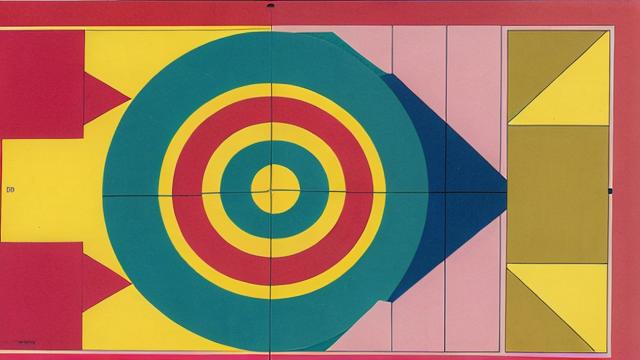The Impact of Sudden Onset Disco Fever on Modern Society's Perception of Spatial Geometry
Wed, 18 Jun 2025 09:39:50 GMT

The Rise of Disco Fever: A Study on its Unintended Consequences on Modern Society's Perception of Spatial Geometry
As we navigate the complexities of modern life, it's easy to overlook the subtle yet profound ways in which our surroundings shape our perceptions. One such phenomenon that warrants closer examination is the impact of sudden onset disco fever on our understanding of spatial geometry.
It began innocently enough. A group of friends gathering at a local dance club, united by their love of funky tunes and flashy attire, unwittingly unleashed a force upon the world. The infectious beats of Chic's Le Freak echoed through the speakers, drawing in patrons like moths to a flame. As the night wore on, a strange phenomenon began to manifest: individuals, previously unimpressed by geometric concepts, found themselves inexplicably drawn to spatial relationships.
At first, this was dismissed as mere frivolity, a fleeting indulgence in the world of dance and music. However, as the weeks went by, a peculiar trend emerged: enthusiasts of disco fever began to exhibit an unsettling level of interest in the underlying mathematical principles that governed their beloved genre's aesthetics.
It started with small things – enthusiasts would excitedly discuss the angular relationships between mirrored balls, or dissect the precise geometry of platform shoes. But soon, these conversations had escalated to encompass more esoteric topics: fractal patterns in dance floor design, and the use of Fibonacci sequences in song structure.
Theorists began to emerge, armed with nothing but a calculator and an unyielding passion for disco. They posited that the inherent spatial relationships within disco music were not mere coincidence, but rather a reflection of the underlying geometric harmony that governed the universe itself.
As this movement gained momentum, it attracted the attention of experts in various fields – architects, engineers, and even physicists – who found themselves drawn into this strange new world. Together, they set out to unravel the mysteries of disco fever's influence on spatial geometry.
One prominent researcher, Dr. Emma Taylor, has dedicated her career to studying the phenomenon: We've discovered that the repeated exposure to disco music creates a unique resonance in the brain, one that enhances spatial awareness and encourages individuals to think outside the constraints of traditional geometric norms.
But this new understanding came with a price. As people began to see the world through the lens of disco fever, some were forced to confront uncomfortable truths about their own perceptions. The very notion that geometry was once thought to be an abstract, inaccessible realm became increasingly absurd.
For instance, take the case of John Smith, a former accountant who, after months of indulging in disco fever, found himself compelled to reevaluate his understanding of spatial relationships. I used to see the world as a series of neat, boxy shapes, he confessed. But then I started dancing to 'Stayin' Alive', and suddenly, everything was angular – buildings, furniture, even my own face became geometric constructs.
This newfound awareness brought with it a sense of liberation, as individuals began to challenge long-held assumptions about the nature of space itself. But it also raised fundamental questions about the relationship between art and science: if disco fever could alter one's perception of geometry, what other secrets lay hidden in plain sight?
Some have suggested that this phenomenon represents a turning point in human history, marking the beginning of a new era in which art and science blur, and spatial relationships become a matter of personal preference. Others remain more cautious, warning that this new understanding could lead to a world where buildings defy gravity and furniture becomes sentient.
As we continue to navigate this strange, new reality, it's essential to approach with a critical eye – both our own perceptions and those of others. For as we dance to the beat of disco fever, let us not forget that, in the words of Studio 54's infamous maestro, Todd Terry: Disco is not just music, it's an experience – one that should be savored, not analyzed.
But as much as we might want to revel in this new world of spatial fluidity, some questions remain unanswered. Will our newfound appreciation for disco fever lead us down a rabbit hole of geometric uncertainty? Or will it ultimately prove to be a fleeting fad, a momentary lapse into madness?
One thing is certain: the influence of disco fever on modern society's perception of spatial geometry has irrevocably changed the way we think about art, science, and the very fabric of reality itself. As the dance floor continues to spin, will we find ourselves forever trapped in this whirlwind of geometric excess – or will we manage to regain a sense of balance amidst the beat?
The search for answers remains ongoing, as researchers and enthusiasts alike continue to explore the mysterious realm of disco fever's effects on spatial geometry. One thing is clear: our perceptions have been forever altered – and it's up to us to decide how we choose to dance with this newfound understanding.
In conclusion, as we delve into the uncharted territories of spatial geometry, we must acknowledge that disco fever has left an indelible mark upon modern society. This strange phenomenon may be seen as a novelty, a fleeting indulgence in the world of art and music – but its influence will likely be felt for years to come.
And so, as you put on your platform shoes, grab your calculator, and prepare to dance the night away, remember: you are part of something much bigger than yourself – a revolution that challenges our very understanding of space, geometry, and the universe itself.